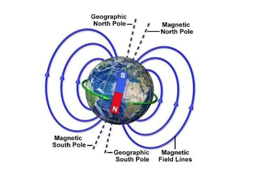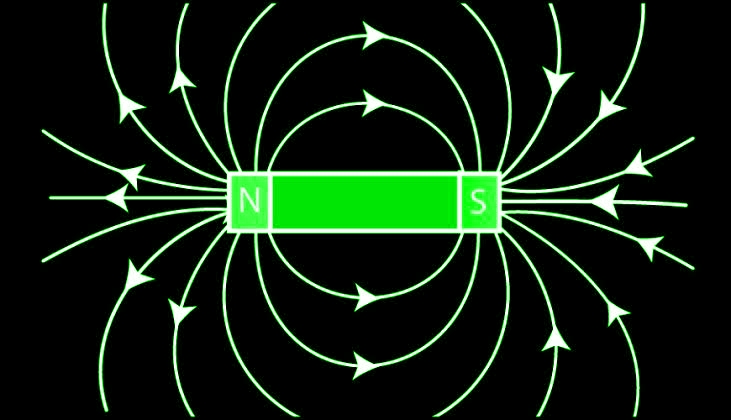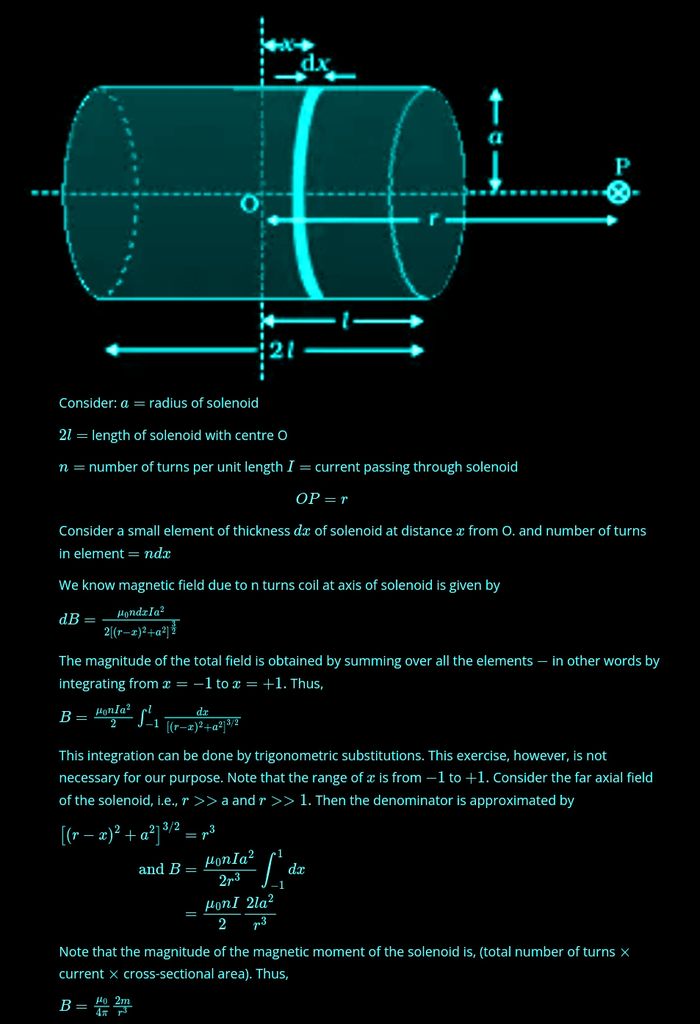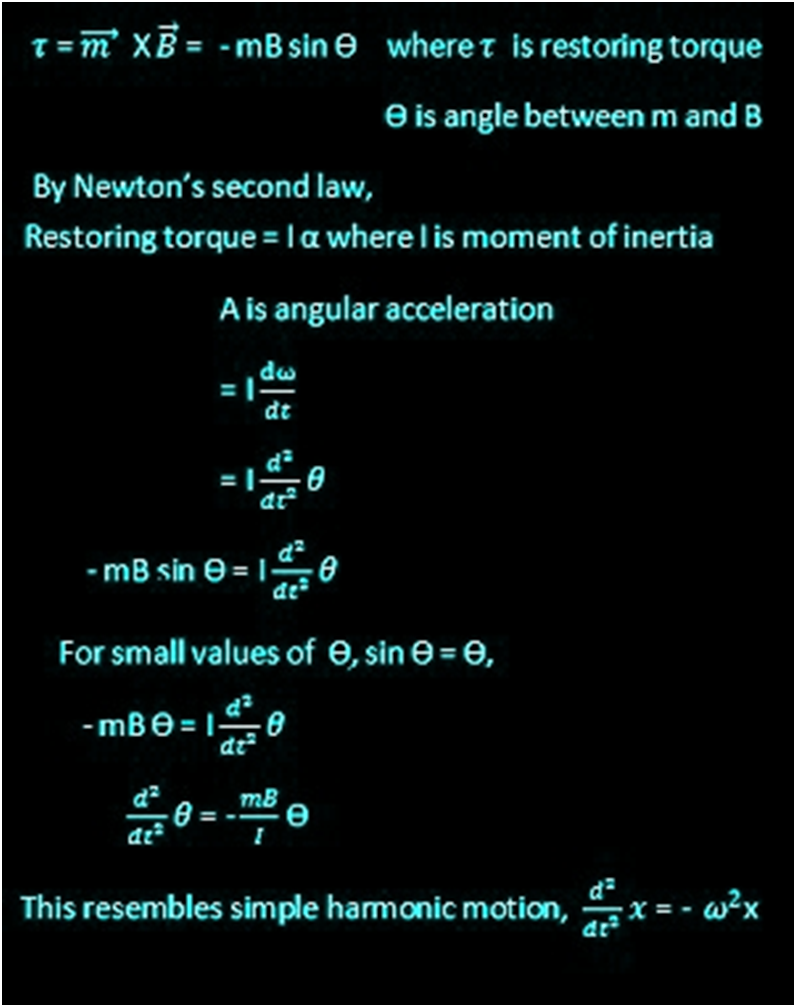- Books Name
- Physics Book Part l and ll
- Publication
- Grow Career Publication
- Course
- CBSE Class 12
- Subject
- Physics
Chapter 5: Magnetism and Matter

THE BAR MAGNET
A bar magnet is a rectangular piece of an object, made up of iron, steel or any other ferromagnetic substance or ferromagnetic composite, that shows permanent magnetic properties. It has two poles, a north and a south pole such that when suspended freely, the magnet aligns itself so that the northern pole points towards the magnetic north pole of the earth.

Types of Bar Magnet
There are two types of bar magnet:
- Cylindrical bar magnet: A cylindrical rod is also known as rod magnets that have a thickness equal to larger than the diameter enabling high magnetism property.
- Rectangular bar magnet: Rectangular bar magnets find applications in manufacturing and engineering industries as they have magnetic strength and field greater than the other magnets.
Bar magnet as an equivalent solenoid
A solenoid is a coil with a length greater than its diameter and is a type of electromagnet to produce controlled magnetic fields by passing an electric current through it.

The dipole in a uniform magnetic field
Take a compass with known value of magnetic moment m and moment of Intertia I . Allow the needle to oscillate in a magnetic field of value B.
The torque on the needle is given by

MAGNETISM AND GAUSS’S LAW
Gauss' Law for magnetism applies to the magnetic flux through a closed surface. In this case the area vector points out from the surface.
Because magnetic field lines are continuous loops, all closed surfaces have as many magnetic field lines going in as coming out. Hence, the net magnetic flux through a closed surface is zero.
Net flux = ∫ B • dA = 0
∫E⋅dA=Q/ε0
Where,
- E is the electric field vector
- Q is the enclosed electric charge
- ε0 is the electric permittivity of free space
- A is the outward pointing normal area vector

 Madhava Publications
Madhava Publications
 Grow Career Publication
Grow Career Publication
